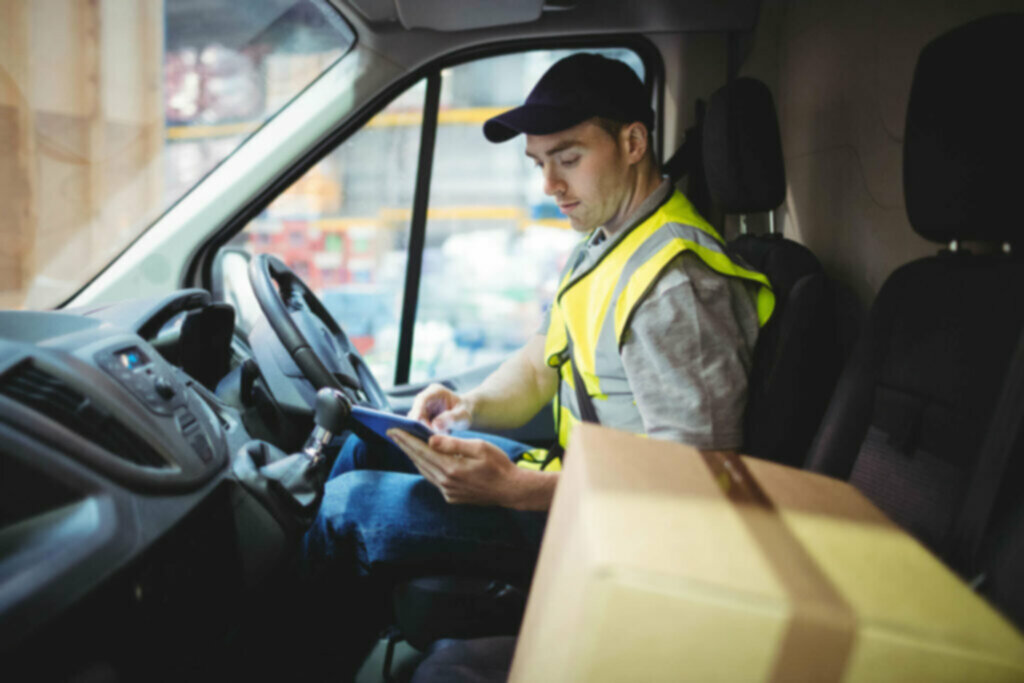
Robert Meehan
Chief Digital Officer|Kerv Digital
Have a question?
Get in touchPublished 28/04/22 under:
Technology has always been involved in the running of an efficient supply chain but with the technology available now, what once seemed impossible has rapidly become the ‘new normal’ for many organisations.
Whilst this article will focus on the back-office technologies that are bringing such huge efficiency savings to supply chains (like AI, RPA and Blockchain) there’s also a lot of exciting advances in ‘customer facing’ technologies, such as self-driving lorries.
By utilising cutting edge technologies like AI, ML, Predictive Forecasting and the increased security the Cloud brings, organisations struggling with issues like the globalisation of markets, increased product complexity and a more ‘switched-on’ and demanding customer base can automate their internal operations (both in the warehouse and the administration offices), massively reduce delivery times, better manage inventory and create a customer experience that will leap them ahead of their competitors.
These technologies mean organisations can collect and collate swathes of data at every checkpoint of the supply chain, from the ordering of raw materials to the condition of finished goods.
Ai, ML and advanced analytics can then be used to drive cost saving automations such as making ad-hoc changes to delivery routes based on evolving traffic patterns or swapping out material suppliers based on fluctuating costs.
Supply Chain Management isn’t just a back-office function anymore. As they’ve become more complex and internationally dispersed they’ve become strategic and very real drivers of organisational growth, with those not employing new technologies bottle necking their growth.
How Supply Chain Technology Is Improving Logistics
Almost all recent advances in Supply Chain technology have been with the goal of increasing either efficiency and/or resilience.
However, each advancement aims to improve a different aspect of the Supply Chain.
Demand Forecasting
Demand forecasting has, traditionally, been the bane of supply chain logistics.
It was always hard to predict due to disjointed and disparate systems managing both upstream and downstream activities, often leading to mistakes in inventory reconciliation and all the problems that led to.
With modern supply chain technology, it’s not only possible, but incredibly easy, to connect all of an organisations sales channels and distribution centres together under one system, allowing for accurate and AI led demand forecasting.
It can provide a full overview of inventory trends and data across the entire supply network at a glance.
On-Demand Logistics
We’ve spoken in more in-depth around on-demand logistics elsewhere but in short, to facilitate same day/next day delivery, an organisation needs a reliable and efficient infrastructure.
Modern Supply Chain technologies provide that, allowing for faster deliveries thanks to advances in AI, robotics, ML and RPA.
These technologies can be used to automate as much of the supply chain as possible, allowing your logistics specialists to concentrate on expanding your coverage, improving workflows, and optimising the entire logistics infrastructure.
Improved Order Accuracy Rates
Running a successful, efficient, supply chain of any kind is hard. When dealing in high volume orders it’s even harder to maintain the accuracy rates required to ensure a successful customer experience and the organisations reputation.
That’s where supply chain technology steps in, as automating many of these processes removes the chance for human error.
The leaps forward in supply chain tech means robots can be used to pick, pack and sort in warehouses whilst stakeholders can be presented with real time, accurate information across the entire gamut of the supply chain.
Real-Time Monitoring
Leading us nicely onto real-time monitoring.
Organisations running any kind of supply chain, but especially ecommerce, will understand how shifting inventory and demand levels can be. Sometimes this can be predicted but often it will be unexpected.
That’s why supply chain technology that can empower real-time monitoring is so vital. It gives stakeholders within the organisation the ability to stay on top of operations that can fluctuate not by the day but by the minute.
Automated Shipping
Automating a supply chains shipping function takes out a large part of the complexity, as well as the part most prone to human error.
Customer orders are directly added to a picking queue, where sometimes, robots can pick the items and send them out for dispatch with minimal need for human intervention.
So that’s how technology can help the supply chain, but what does the technology powering it look like? What’s required to take a company from here… all the way to… here?
How To Create Reliable Demand Forecasting: Demand Forecasting, when supported by the right tech, can cut supply chain errors by up to 50%.
Whilst more traditional inventory forecasting might rely purely on historical data, the advanced tech now available like Microsoft Dynamics 365 Supply Chain Management utilises AI and ML to forecast demand more accurately whilst optimising inventory levels and automating inventory replenishment.
That Machine Learning helps to enhance real-time information by aggregating data from hundreds of disparate sources, both internal and external, including demographics, historical data, traffic reports, weather reports and even social media.
New products that might lack historical data to rely on can still benefit from the machine learning capabilities of D365 by identifying trends from similar products and using that data to support the decision-making process.
The Role Of AI In Supply Chain Management: Artificial Intelligence has revolutionised supply chain management, with sector experts estimating the transport and logistics industry could achieve 89% incremental value through its adoption.
When it comes to supply chain management, AI can be split into two, broad categories.
Augmentation, or any AI that’s designed to assist a human in their day-to-day roles and…
Automation, or any AI designed to function without outside input (once it’s been configured).
Blockchain Technology And It’s Adoption In Supply Chain Management: Whilst most people would only associate blockchain tech with cryptocurrencies, it’s use within supply chain management is only just now beginning to be explored but is already paying off dividends for those that have.
As blockchain creates an indisputable record of transactions, the tech is well suited to sectors other than crypto… sectors like transport and logistics where it’s important to establish the provenance of goods and orders as well as being able to rely on shared supplier information from multiple third parties.
Blockchain is capable of establishing an immutable audit trail that can’t be called into question, making it far more reliable and secure than other methods such as email or dare we say it… paper trails.
That means blockchain can be used to empower track-and-trace applications to help organisations document their chain of custody items. Do it right and at a glance a company can prevent leakage, identify fraudulent items, easily spot at risk suppliers, demonstrate to regulatory bodies they’re going above and beyond statutory regulations (above and beyond until blockchain becomes the standard anyway) and create complete transparency for audit purposes around their sourcing policies.
Supply Chain Security: cloudThing are the first to promote a security-by-design approach as the tech currently available is capable of making the entire supply chain more secure than it’s ever been.
Expansive and wide reaching supply chains will always be a prime target for cyber actors, simply because there’s so many data sharing touch-points for them to attack.
Cloud based technology such as Dynamics 365 Supply Chain Management comes with industry leading security baked in… encryption tools, tokenisation, on-demand access and automated alerts are all out-the-box solutions to combating modern cyber criminals.
Robotic Process Automation (RPA): Robotic Process Automation is something we’ve discussed at length elsewhere, so we won’t belabour the point here.
When we’ve discussed RPA in the past it’s been the automation of back-office processes… of which the logistics sector have a lot of.
However, quite apart from all the efficiency and cost savings RPA can make in the back end, supply chain organisations can also utilise it to automate front end processes like self-driving trucks, drones and storage and retrieval systems (ASRS).
Automating customer facing processes with robotics, might sound like so much sci-fi, but many organisations running supply chains with autonomous robots have reported increased efficiency and productivity, improved employee safety and increased revenue through empowered order fulfilment processes and delivery speeds.
The Internet Of Things (IoT): Whilst IoT isn’t strictly speaking a back office function, the approach of attaching sensors to all the ‘thing’s on a supply chain (finished goods, delivery vehicles, drones, shipping containers, warehouse stations etc) provides an enormous amount of data on said supply chain. Data that can then be employed by your AI and ML functions to generate in-depth insights that have never been possible before.
Consider a supply chain capable of automatically monitoring weather conditions, environmental statuses, traffic patterns and much more… The AI can then use that information on, for example a refrigerated vehicle to determine how likely equipment failure is and reroute it to a more optimal route or even to a closer distribution centre… all without the need of any human intervention.


